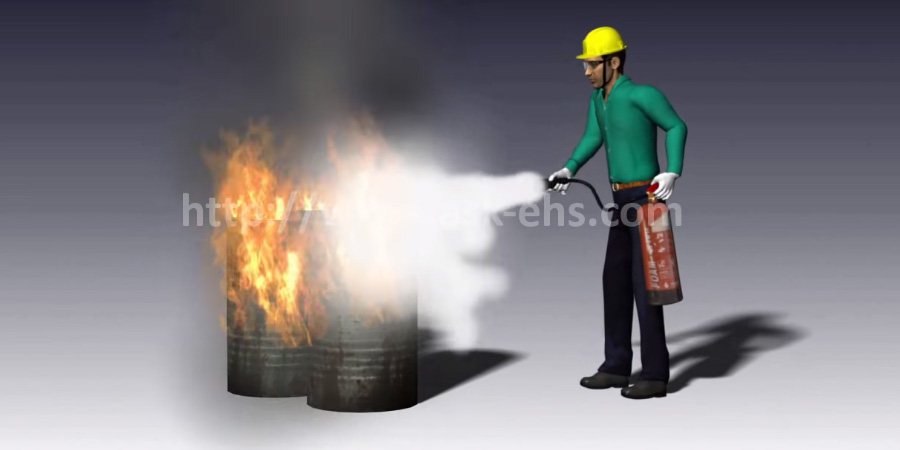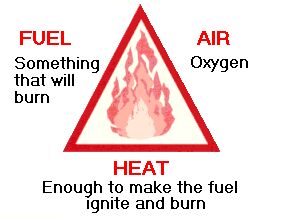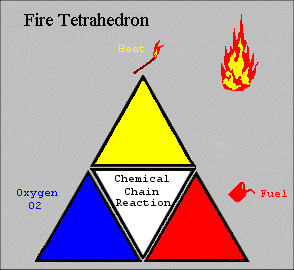What is Fire & Fire Safety?

Fire represents an incidence wherein heat, an important type of energy, appears in physical form with heat content and temperature level. Scientifically, and in the history of development of human civilization, fire represents a milestone, having learned about which, mankind has made tremendous progress.Even now, fire is witnessed as a source of service at our homes in the kitchen, in bathroom for heating water, in the room for heating atmosphere and to a large variety of applications in industries for preparing various goods and services. Furnaces, in industrial applications, serve us for a variety of useful treatment of metal products, industrial components and even sub-assemblies and assemblies for major equipment.
Having been symbol of civilization and its development, fire turns to be a serious hazard for life and property once it goes out of proportion and control. It is shocking, how, an item of utility turns into a source of devastation but it is a fact.
Conventional fire or fire using hydrocarbon as fuel is the visible effect of the process of exothermic reaction known as combustion.
Previously, the concept of fire triangle was used, which was represented by the Triangle of Combustion that is fuel, heat and oxygen.


Lately research determined a fourth element that is a chemical chain reaction which is an important component to aggravate and sustain fire once it is ignited. The fire triangle hence was modified to a fire tetrahedron to reflect this fourth element. Each of the four sides of the fire tetrahedron symbolize the Fuel, Heat, Oxygen and Chemical Chain Reaction.
Common causes of fire in the workplace include –
- Late discovery of a small outbreak results into a major outbreak of fire
- Presence of explosive dusts, gases or vapours
- Improper storage or faulty disposal of combustible material
- Using combustible materials at workplaces
- Storing materials like flammable liquids in unsuitable containers and in large quantities
- Inappropriate fire retarding/stopping measures, combined with poor building designs
- Vandalism resulting in the disabling of fire detection and firefighting systems
- Presence of ignition sources – appearing as a result of lack of control
You can watch other EHS videos on SafetyAnimation YouTube Channel.
Fire Detection
- All workplaces should have arrangements for detecting fire.
- Sensitive areas to fire (for example any area of temporarily vacated workplace, basement or storage areas which are not visited regularly) should be identified at a workplace and more attention should be rendered to them so that fire should not start and spread undetected.
- It is required to protect vital escape routes at the workplace where fire can erupt and aggravate before being discovered for example staircases, walk-ways etc.
- An effective, reliable and automatic fire detection system, linked to an effective fire warning and extinguishing system should be installed
- Fire protection systems are complex and hence, consultation with local fire authorities and experts should be taken for detection, warning, reduction control and fighting fire.
Steps for Fire Risk Assessment
Step 1 Identifying fire hazards and possible sources of ignition
Step 2 Identifying people at risk
Step 3 Evaluate Risks and Decide if Existing Precautions are Adequate
Step 4 Record your Findings and Actions
Step 5 Review, Revise & Monitor on a Regular Basis
Common Fire Fighting Measures
- Basic firefighting training should be provided to all the employees at the workplace.
- Sufficient fire extinguishers of suitable types should be installed at workplace.
- Fire extinguishers installed should solve the purpose and should have sufficient capacity.
- Make sure the extinguishers are located close to the fire hazardous points.
- Always ensure efficient firefighting system during emergency planning.
Would you like to share your views? Send us your comments and suggestions.



Thank you sharing informative knowledge…
Good video showing basic fire fighting, can you please share demo video?
Appreciate your comment. We are glad that you found out blog insightful. Stay connected to us for more informational & insightful content
Very interesting post. Thanks for the post. This is my first-time visiting here. I found so much interesting stuff in your blog.